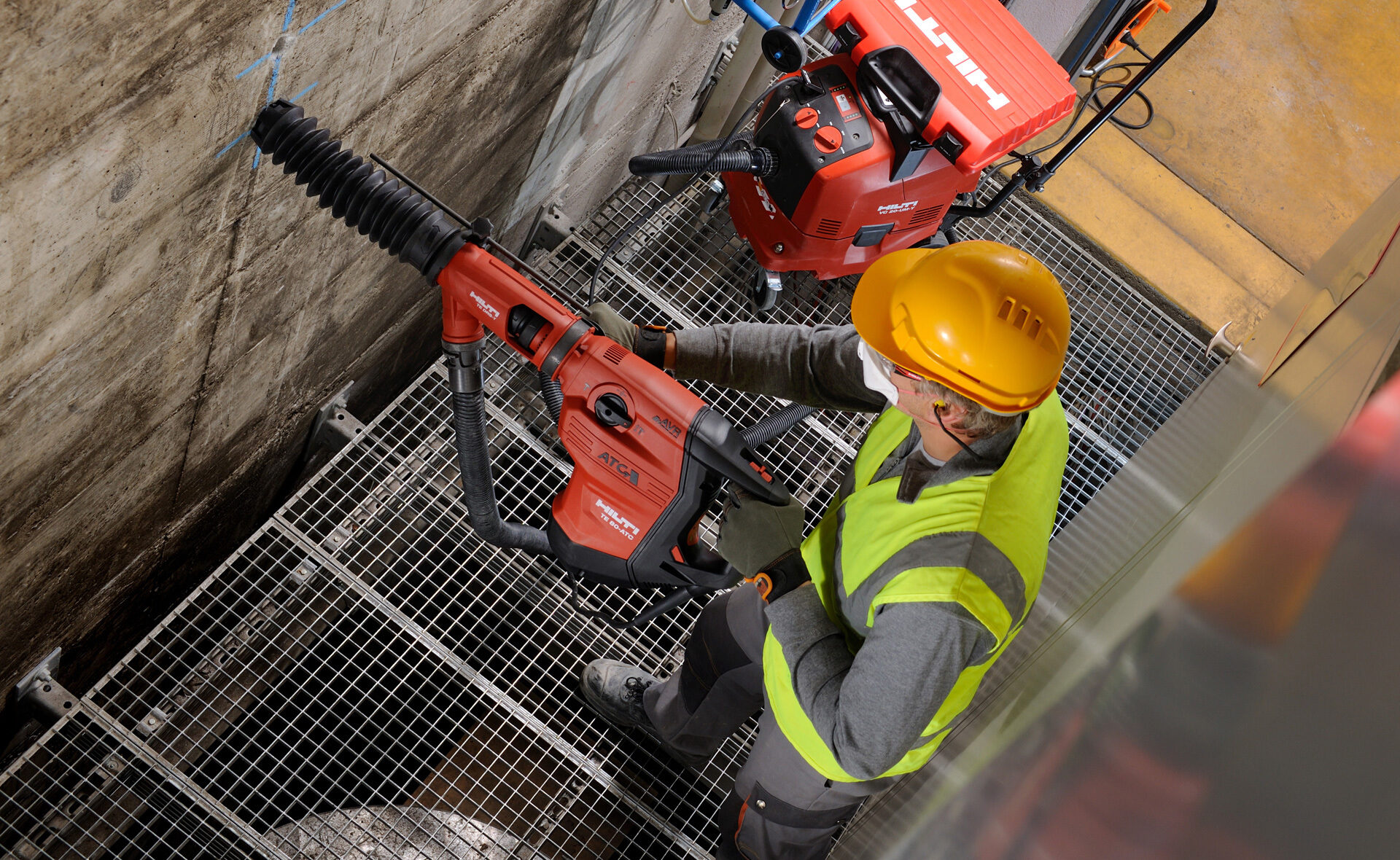
Hilti - Customer Experience for a leading Direct-to-Consumer Brand
Experience the brand at every touchpoint
Hilti represents quality, innovation and the best service for professionals on construction sites around the world. Accordingly, the demand for digital customer experience is high. A consistent focus on the needs of the target group, efficiency and scalability are central requirements for the digital services of the Liechtenstein company. And thus also the requirements for our work. After two fundamental redesigns of the eCommerce platform in 2012 and 2016, the collaboration has since then changed. The separation between agency and client has been largely dissolved, and we work as an integral part of Hilti's digital unit of almost 200 people on the continuous further development of the brand, services and platform.
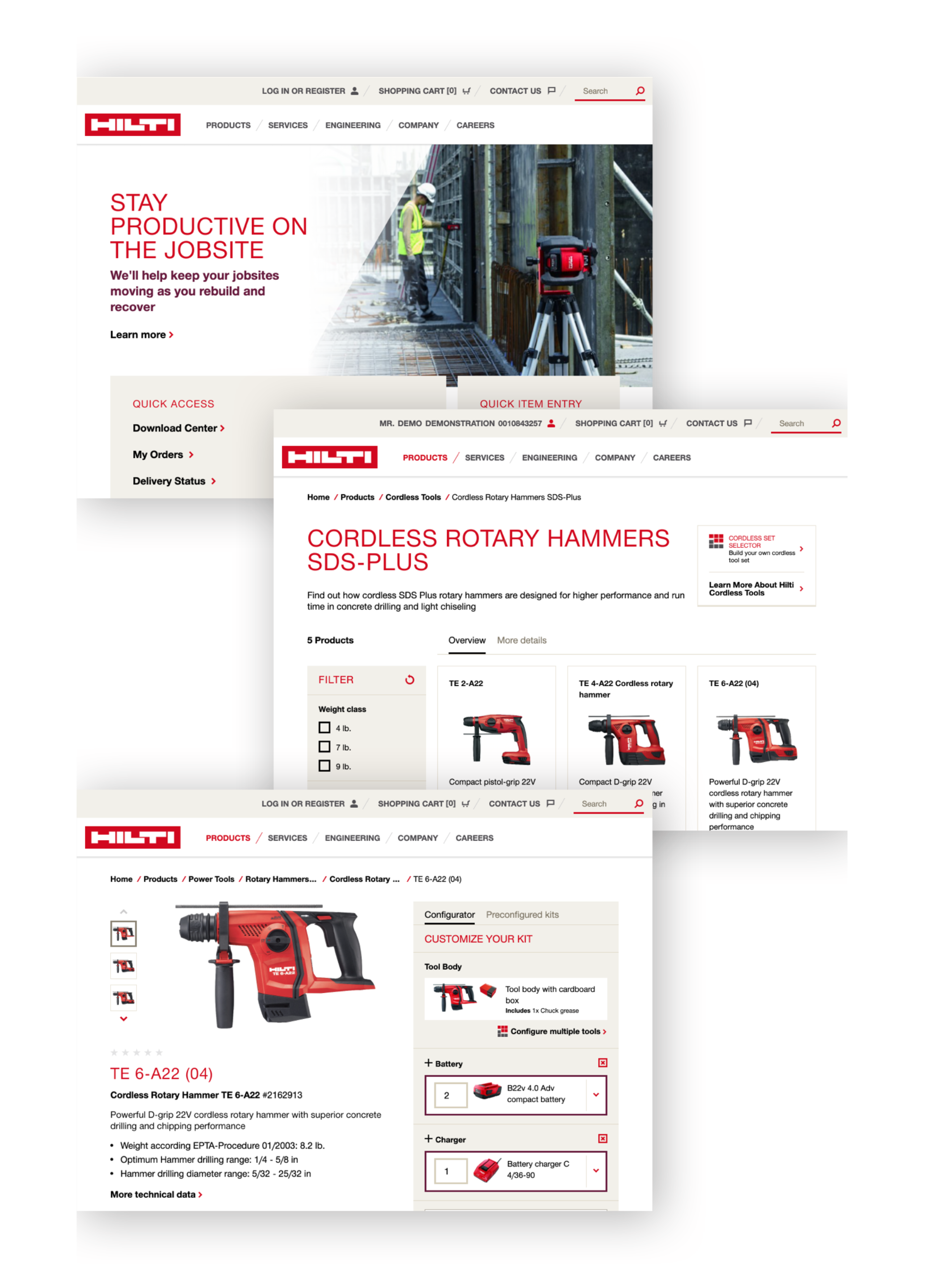
Continuous improvement process
Continuity is the key to our joint success. Mutual trust and well-coordinated teams make it possible to manage the complexity of a holistic customer experience across many touchpoints. A lot has happened since our last website relaunch in 2016: initially, we developed a comprehensive design system. On this basis, the platform was redesigned in all its facets and configurators and digital products were redesigned and implemented. Thanks to the design system, a consistent experience was created across all platforms, apps and tools.
eCommerce: simple and scalable
Hilti is characterized by a very large variety of products. There are also many modules and service offerings that can be combined with each other. This requires a platform that integrates many qualities: high-performance, efficient, scalable and easy to use. The challenge is to make the great complexity as easy to access as possible and at the same time do justice to the brand. For this purpose, we have developed configurators such as "Make it fit". This enables simple product selection via application-related questions. All solutions were developed and tested together with construction professionals. In this way, a puzzle of complexity was turned into simplicity, which in turn serves the brand and the customer experience.
37
countries
15
languages
35k
products
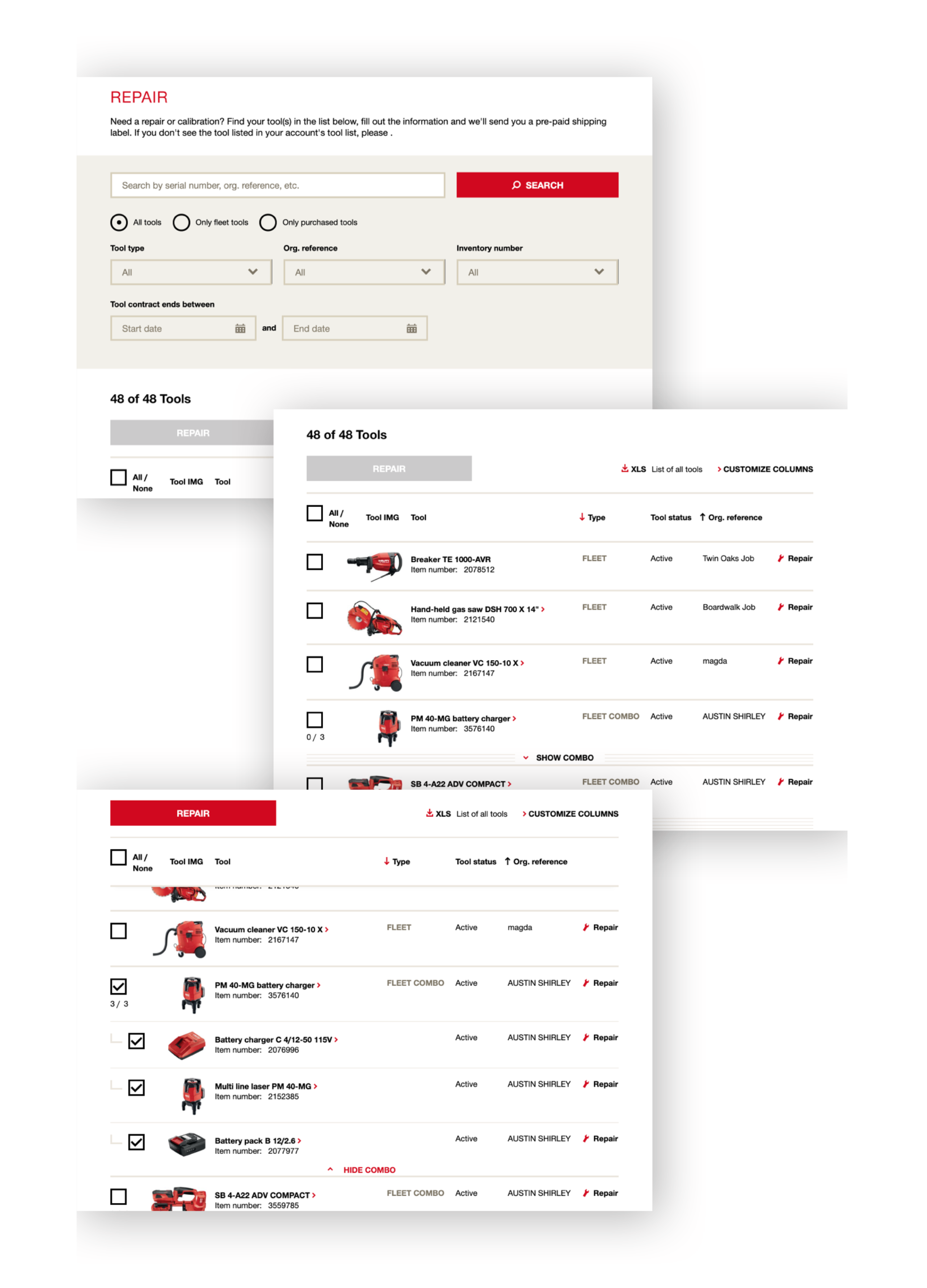
With research to the ideal UX
Since 2020, we have also been supporting Hilti in the area of UX research. Closely interlinked with the internal team and yet with a view from the outside, we identify problems and needs at all touchpoints in qualitative interviews. The insights gained from this serve as a basis for decision-making: Which features are helpful and offer the greatest added value? Which investment is worthwhile and which is not? From interviews and tests, we generate valuable information that flows directly into the work of the integrated teams.
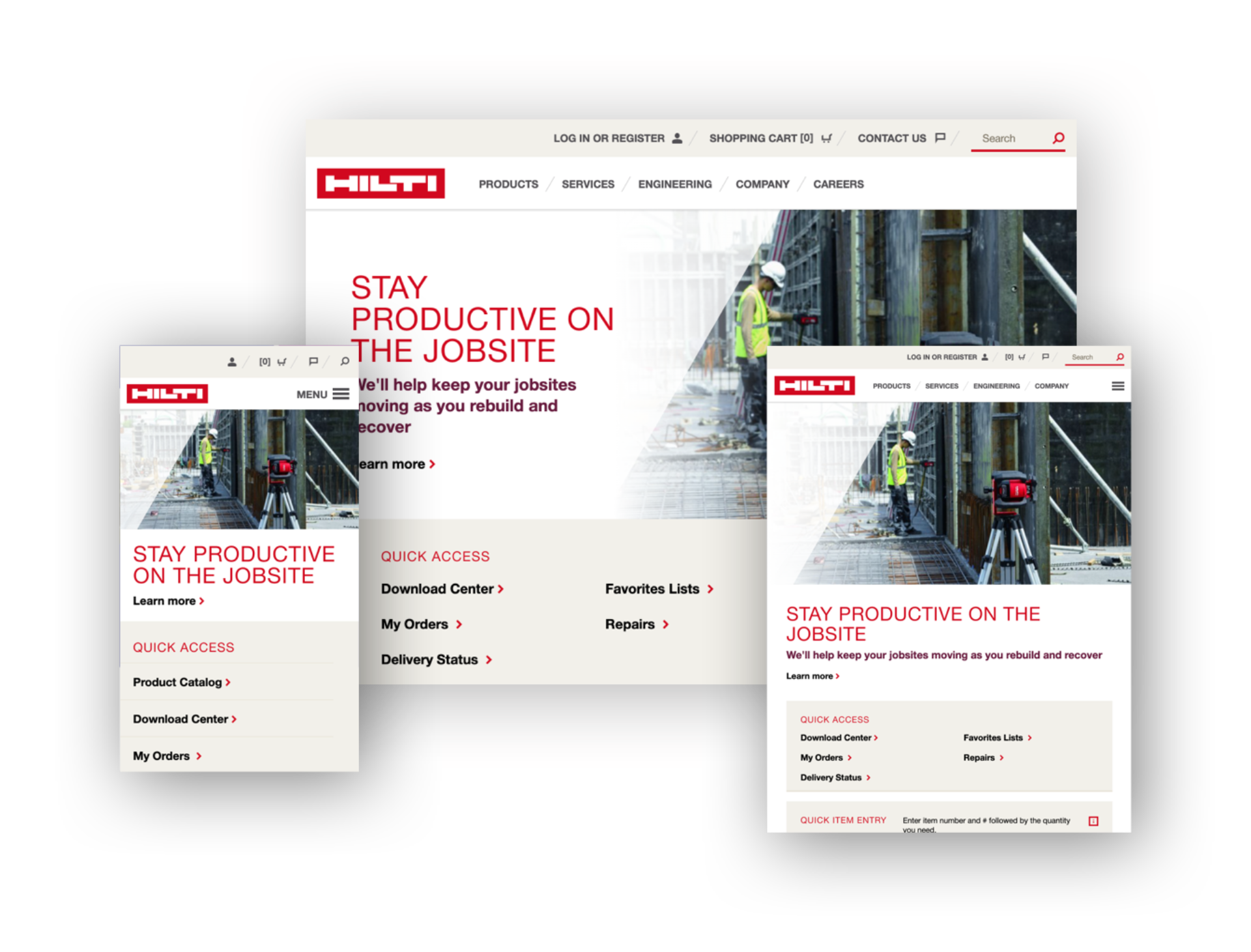
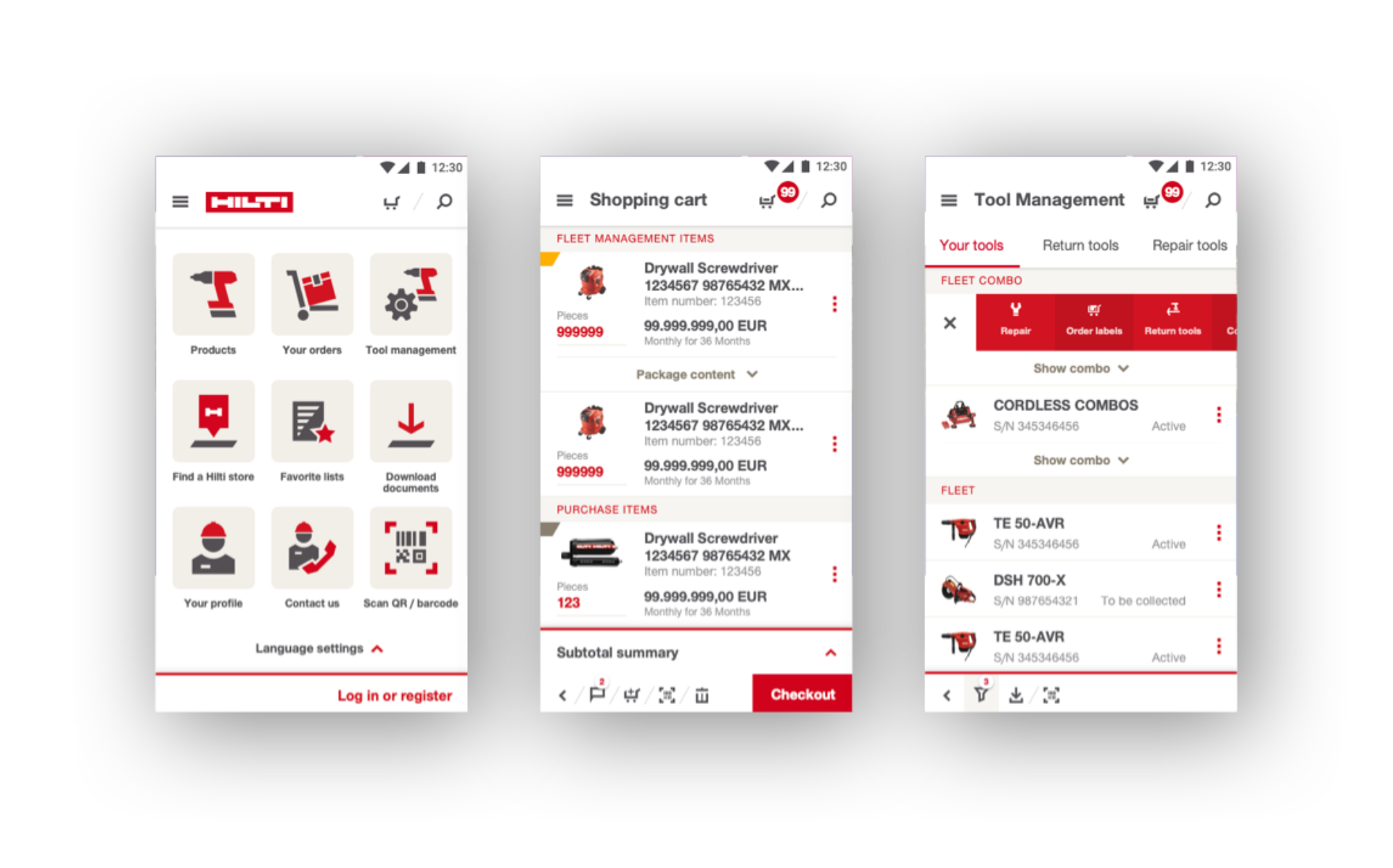
Great brand on big and small screens
Of course, the digital experience must work on all devices. Our design system therefore takes into account the different specifics of the relevant devices. When downscaling from desktop to mobile, content and function are automatically adapted, while the characteristic layout is maintained on all screen sizes and digital touchpoints through responsive design. The Hilti app was also given a new framework, including UI specifications and UX patterns, to best align technical solutions requirements.
Consistent and flexible design system
We put great emphasis on the balance between usability and identity. For this, we designed a library of 'design tokens' and components. A new color scheme and variable typography provide more flexibility in design; equality of elements, eye level instead of trumping; generous space allocation; full responsiveness; scalability. Overall, the result was a system that combines flexibility with consistency.
- 3 Images
Scalable and operable systems
State-of-the-art tools for creating templates and functions, as well as a system of modular components bring the design system to life. With technologies like Angular, Nrwl NX and GraphQL, Hilti is well positioned for the future. Together, we are working towards an API-driven micro-service architecture and a decoupled front-end framework, in order to be able to react flexibly and quickly to new target group and market needs in the future. In other words, a long-term and continuous improvement process for one of the most exciting direct-to-customer brands in the world.